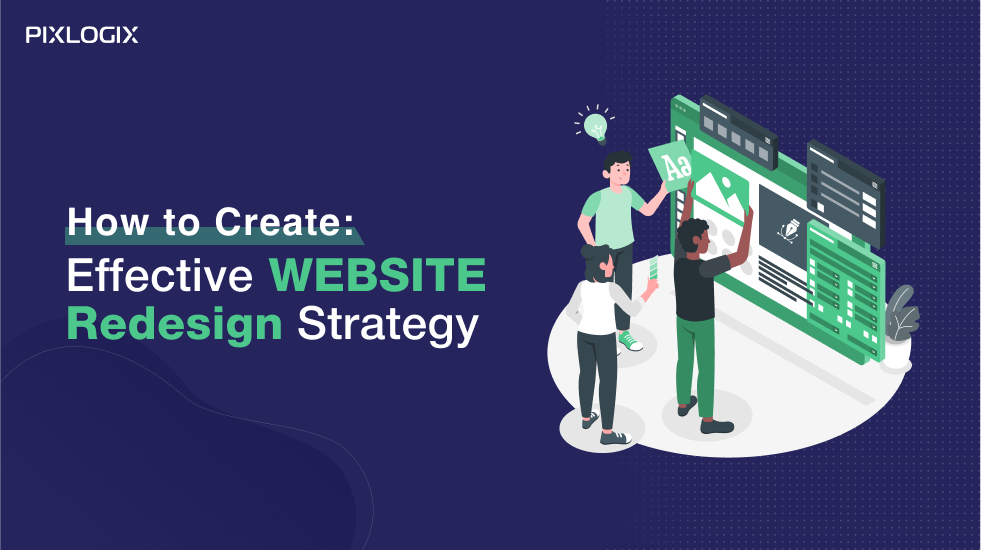How to Create a Web Design Workflow: A Complete Guide

- Last Updated On March 18, 2024
- 12 min read
Web design Workflow is important to build a beautiful website. Do you know how to create a web design workflow?
If not, you need to hire a web designer who helps you develop your web design workflow, or just read these professional tips and build your own web design workflow for designing a unique website.
In this blog, we will share a complete guide to web design workflow, including what is meant by website design workflow, its stages, and exclusive steps. So, let’s begin the journey.
What is a web design workflow?
A web design workflow is a set of processes that cover each step in creating a website. It considers the actual design process and includes everything from the preparatory stages to the launch.
It aims to make navigating through the web design process easier so that you have an overview of the processes from start to finish and everything in between. It also helps you determine which individual and team tasks need to be completed first to ensure that the project stays on track and that you don’t hit any roadblocks along the way.
A web design workflow has many benefits, not least because it keeps everyone involved and in the loop.
After a successful launch, team members and clients alike should be able to control what’s happening at any given moment, whether it’s choosing where to build the site, simulating wireframes, testing the user experience, or uploading content.
Top reasons for creating a web design workflow.
Many beginner designers can not understand why building a Web design Workflow is essential before executing the project task. So, for all of you, here are some more reasons why a web design workflow can help improve your design process:
Workflow can help in scheduling.
A workflow helps you map out the time frames for each task and provides a broad overview of all the processes involved. This means you are able to create an accurate project timeline for your clients and team members, leading to improved communication and decision-making throughout the project lifecycle.
The workflow of web design can increase productivity.
Things run much more smoothly when everyone knows what they should be doing and when. A workflow keeps team members informed of what’s next so no one is sitting around twiddling their thumbs.
Web design workflow can maintain consistency.
Building a solid structure for your web design projects will help you stay consistent with each client. This means no more missed steps, making it easier to maintain a high level of quality in everything you create.
Workflow can help in tracking the task.
While designing, there are a lot’s task to do, and it is hard to track each step without planning every step or effort which you are putting into the work. Moreover, some time is a waste of resources and time. Additionally, with the help of web design workflow, you can stay on track and meet deadlines every time.
It helps in building a good relationship with clients.
Maintaining a good relationship between you and your client is very important. With the help of Web design Workflow, your clients know what to expect from you, when to stop crowding your inbox, and let you do what you do best.
This can create a transparent bridge of understanding between you two (you and your client). Because trust is the foundation of any great client relationship, clear communication and transparency are the fastest way to build it.
These are the primary reasons that can make web design workflow as a vital element for the pre-web design process. After this, let’s see our next section, the stages of the Web design Workflow.
Basic stages of the web design workflow.
While each design project will vary depending on the scope of the project and the needs and business goals of the client, there are three basic steps involved in all situations:
Planning Phase
Here you determine the goals of the projects as well as the target audience that the website will be aimed at.
Implementation Phase
This is where ideas and visions come to life. It’s where the design work happens, the content is created, and it all comes together.
Testing and Launch Phase
The final stage is testing the design and content and promoting the website live for the world to see. This phase also includes further improvements once the website is live and you start collecting visitor data.
These are the general phases of every web design workflow. If you break your web design into the above-mentioned stages, you can easily create a web design workflow for your website. Now, let’s have a look at an ultimate checklist of these stages and major tasks in depth.
A Practical Guide to the Web Design Workflow
Now that you know what a web design workflow is, what stages are involved, and what data you need to gather and complete before you begin, here’s a guide to putting it into practice.
Define goals and target audience.
Goals will guide your web design project. Think about what the website will be used for.
- Is it selling products or services?
- Is it about attracting new employees to jobs?
- Is it about providing a great user experience for blog readers?
- Is it about increasing brand awareness for an emerging startup?
Once you know what the goals are, you can start thinking about the people for whom the website is intended.
Think about the following things:
- Who is the website for?
- What do these people hope to find when they come to the website
- What is the main purpose of the website (e.g., to sell, entertain or inform)
- What competing sites are there, and what makes this site different
Once you get all these answers then, you can easily understand what your goal is and what you want from your web design work.
Plan the site structure.
This part of the workflow includes two steps:
- Create a sitemap
- Creating wireframes
A sitemap is a visual representation of a real website from a bird’s eye view. It helps designers map out what pages go where and the content hierarchy.
At a deeper level, wireframes outline each page’s appearance, complete with the essential elements, without affecting the design. This is a great opportunity to learn about the user journey and bring the most important elements to the fore.
Decide on your CMS
You may find that your client has already determined which content management system (CMS) they want to use, and you are bound by that. If not, it’s time to make a decision.
It is a good idea to think about which system best suits the purpose of the website. For example, if the site is set up to have hundreds of informational pages, you’ll need a robust CMS for that, whereas if it’s a three-page portfolio portal, you’ll probably have more flexibility.
Develop the Content
It’s the moment when everything comes together to create the overall end result. This is also when you start curating content and design together to see if it works (e.g., if a block of copy is too long or too short for the space).
Review and Approval
The website is almost ready to go. Now is the most challenging moment to reveal to the client and get their approval.
This stage may involve a meeting or simply handing over the property. However you do it, you should have a system in place to get feedback from all stakeholders.
You can do it like this:
- Submitting a survey
- Creating a design video tutorial
- Arranging a face-to-face (or virtual) meeting
- Allowing stakeholders to add comments to the document
After getting all the comments from stakeholders, update and get approval from the clients.
Testing
Not everything will always go as planned, which is why testing is such an essential part of the web design workflow. This is the part where you can:
- Fix all bugs, including broken links, video buffering, and dead contact forms.
- Review the entire content of the website.
- Check your SEO settings to ensure everything has been correctly implemented.
- Test mobile responsiveness to make sure your site is mobile-friendly on all devices.
After the test, prepare the report of errors and issues and then fix them.
Startup and Other Improvements
You know better than anyone that a website is never “done” when it’s up and running. There is always something that has chances for improvement and needs to be done somewhere.
The last step in the website design workflow is to make further improvements. Once your site is live and collecting data, you can begin tracking analytics to gain deeper insight into how your audience is behaving on your site.
In addition, websites must be constantly updated, which often means that the web design workflow is still ongoing.
Wrap Up
Web design Workflow makes the design process smoother and much more successful because you can strategically move from one stage to another without missing any essential activities.
When you use a web design workflow, you can quickly know what things you need to do, when it should be done, and by whom it is good to finish.
This guide will help you understand Web design workflow and its major steps. But if you are still confused, you can contact the top Web Design Companies in India, like us Pixlogix Infotech Pvt. Ltd.
They are highly skilled professionals who can deliver innovative web design services to their clients. If you have any queries, then feel free to reach out to them.
Samir Bhimbha
Samir Bhimbha is the Founder & CEO of Pixlogix Infotech Pvt. Ltd. which offers web and app solutions to fulfill business's online needs and help to improve their online presence with many clients in the USA, Europe, Australia, and more. He is a skilled entrepreneur, web designer, developer, and team leader who can handle every situation. With 15+ years of experience in UX/UI design and web development, he is leading a team of IT professional talents.
Related Post
Get in Touch Now!
Have a word with our expert consultants about your next project to get suggestive guidance & proposal.
Sales Inquiry
Chat with us about your project for a custom solution and quote.





